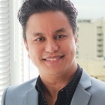
Biri: Ocean's farm, sea sculptures (First of two parts)
(First of two parts)
Boarding was on time – this time, for a domestic flight from Manila, into a 56-seater plane, at 4:45 a.m. The alarm clock went off for me 3:00 a.m. today, even earlier for my three other companions living farther away.
Up in the air, the plane behaved against the headwinds and nimbus clouds as any small plane would – more bumpy than usual. Then while in flight, the pilot said that Catarman airport was still closed. “Did he say the airport is close by?” my companion asked. Visibility was just still poor, perhaps from the rain clouds that still lingered from the night before
Our plane landed safely on the Catarman airport runway that doubled as a public road where people on foot, padyak (pedicab), habal-habal (motorcycle with improvised seats for more capacity) and motor vehicles also pass by – that is, where no plane is expected to land.
A very short habal-habal ride to the boat station and another one-hour boat ride to Biri Island were all that’s left of the trip to the island’s famous gigantic rock sculptures – the artwork that the sea waves and surges patiently sculpted over time.
We needed to do first things first, though. First, we had to see and experience for ourselves this ocean “farming”. You see, the Management Association of the Philippines has a project that helps marginalized entrepreneurs, a sort of inclusive growth advocacy – in action – by way of funding and mentorship.
Help is on the way this time to Sentro ha Pagpauswag ha Panginabuhi (SPPI or Center for Local Economy Development), the social enterprise that currently helps about 50 barangays and 970 fishermen survive and thrive through an alternative occupation: farming in the sea. Our trip is the final go-ahead for assistance to be released.
The one-hour boat ride to Biri was not uneventful – not with the angrily roaring surplus engine of the boat that choked to a halt midway against the counter waves that did not let up. The boat was strong and safe, but the pouring rain, remnants from the night before, had gone diagonal. So we were half-dry, half-soaked when we reached the port of Barangay San Pedro, which was 10 minutes away from the fabled rocks.
The small port doubled as a jumping platform for young children who carelessly dive feet first and tread the crystal clear waters. Only their giggles as they swam and played were heard when the engine of the boat shut down to silence.
We were treated to breakfast at a house that doubled as meeting place for fishermen. The soup from the fish tinola dish of manlalara (tasty black fish) was a good coffee substitute, and the flesh of the fish was soft as cake. My team feasted with their hands on crab cooked in coconut milk and danggit (dried rabbitfish) as well.
We ate heartily, before everybody else ate. We cannot convince the rest to eat along with us as it is in their generous culture to let the guests go first.
There is something almost magical about seaweed farming. No soil preparation required, no fertilizers needed, no routine watering, and to top it all, one can be landless and still be a farmer because the sea belongs to everyone.
What the seaweed seedlings need, though, are subtle waves. In a still bay, the seedlings will not grow, but in violent waves, the seedlings will break. Waves at normal strength, the type that can lull one who is afloat to sleep, is the ideal environment for the seedlings to sprout to life.
Seaweed farming is easy on the “farmer’s” back. Even the fishermen’s wives can do it while the men catch fish. The harvest can be done in as early as 30 days if needed, and full harvest in 75 days. They are sold to processors who convert them to carrageenan powder that manufacturers use to make gulaman (bars of dried seaweed used to make jellies or flan), or as an ingredient for medicine capsules and shampoo. The powder can also be mixed with flour to make the pasta al dente.
We walked to the farm locations. We walked, rather than ride boats or swim, because of the low tide. It was about four kilometers’ walk along the beach during low tide with the fishermen, some kids and their dogs.
The seaweeds were being held up with floaters from recycled plastic bottles as raw materials. A plastic gallon container (normally used as water container) floating from both ends of a seaweed line serves as anchor. The seaweeds were beautiful to look at and slimy to touch, but sturdy too, which explained its agile uses in its powder form.
This sea-farm product is sold by farmers after drying. We were shown their dryers, which are actually simple rectangular beds with nylon nets as mattress. There lies the problem because these beds for drying are exposed. When it rains, the reverse of drying happens. To save the rain-soaked harvest, they are sometimes returned to the sea, which is like nature’s refrigerator. But that can only preserve the seaweeds’ life for up to three days only. That is why financial assistance is important – to construct sheltered drying structures for the barangays.
We are about ready to take the next five-minute habal-habal ride to the famed rock formations. While balancing on this two-wheeler and holding my luggage, I could not help the thought of those children jumping and playing carelessly at the bay of the port, at will, any time, every time. No toys, but that did not matter to their day. Our children back home have all the gadgets, airconditioning, and allowances, yet they still argue or complain. This, I thought, was the difference between standard of living and quality of life. (To be continued)
Alexander B. Cabrera is the chairman and senior partner of Isla Lipana & Co./PwC Philippines. He also chairs the Tax Committee of the Management Association of the Philippines (MAP). Email your comments and questions to aseasyasABC@ph.pwc.com. This content is for general information purposes only, and should not be used as a substitute for consultation with professional advisors.
Contact us















